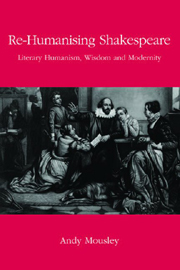Book contents
9 - Hope: The Winter's Tale
from Part II - How to Live
Published online by Cambridge University Press: 12 September 2012
Summary
In Samuel Beckett's Endgame (1958), Clov claims – provisionally – that ‘There's no more nature’:
Hamm: Nature has forgotten us.
Clov: There's no more nature.
Hamm: No more nature! You exaggerate.
Clov: In the vicinity.
Hamm: But we breathe, we change! We lose our hair, our teeth! Our bloom! Our ideals!
Clov: Then she hasn't forgotten us.
Hamm: But you say there is none.
Clov: [Sadly.] No one that ever lived ever thought so crooked as we.
The world of Endgame is featureless, monotonous and uncertain. These aspects of the play make it difficult to know whether nature has ceased to exist or not. There are no markers, no reference points. To Hamm's repeated question ‘What's happening, what's happening?’, Clov (repeatedly) answers: ‘Something is taking its course’. The ‘something’ is unspecified. That this something could be anything at all suggests that the claustrophobic world inhabited by the characters in Endgame is paradoxically also an unlimited world, a ‘grey’ world with neither external nor internal landmarks.
If one of the endgames of the ‘liquid modern world’ (so described by Zygmunt Bauman in Liquid Love) is the possible disappearance of nature, including human nature, then some of modernity's opening moves, as played by Shakespeare, are to embrace modernity's positive aspects (the openness of nature and human nature to question and transformation), but to resist the negatives (featurelessness, total plasticity and disintegration) by reorienting characters to human landmarks and connecting these to nature.
- Type
- Chapter
- Information
- Re-Humanising ShakespeareLiterary Humanism Wisdom and Modernity, pp. 158 - 171Publisher: Edinburgh University PressPrint publication year: 2007



